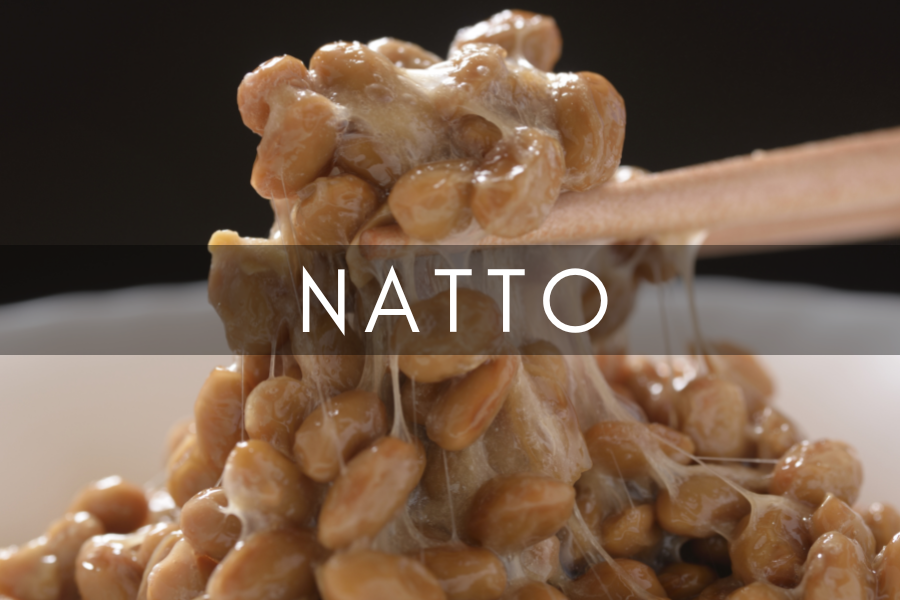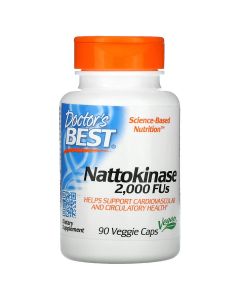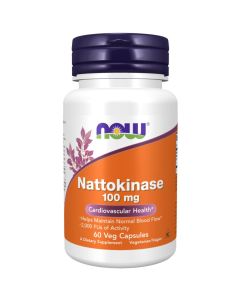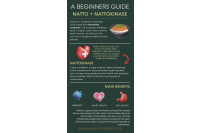
A Beginners Guide: Natto and Nattokinase Health Benefits
What Is Natto?
Natto is a traditional Japanese food made from fermented soybeans. It is a popular breakfast food in Japan, and it has a distinct smell, texture, and flavour that can be an acquired taste for some people.
Natto is often served with rice, soy sauce, and mustard, and it is sometimes mixed with raw egg yolk or green onions. Natto is considered to be a healthy food, as it is rich in protein, fiber, and vitamins. It also contains a unique enzyme called nattokinase, which is believed to have potential health benefits, such as improving cardiovascular health and reducing blood clotting.
What Does Natto Taste and Smell Like?
Depending on how long it’s fermented, natto can have a lighter flavor or a very strong, bitter flavour. Natto has been descibed to taste like an earth, nutty, pungent cheese. Some also compare it to foie gras and old Brie. It can also have a strong, earthy smell.
The Fermentation Process
To make natto, the soybeans must go through a careful fermentation process using a specific strain of bacteria called Bacillus subtilis natto. The process involves several steps, including:
- Soaking and Cooking Soybeans: Soybeans are soaked in water for at least 12 hours and then cooked until they are soft. The cooked soybeans are then drained and allowed to cool.
- Adding Natto Spores: Natto spores are added to the cooked soybeans. The spores contain the bacteria Bacillus subtilis natto, which is responsible for fermenting the soybeans and creating the characteristic sticky texture and unique flavour of natto.
- Incubation: The soybeans and natto spores are mixed together and then incubated at a temperature of around 40°C (104°F) for up to 24 hours. During this time, the bacteria begin to multiply and produce enzymes that break down the proteins and carbohydrates in the soybeans.
- Fermentation: As the bacteria grow, they produce a slimy substance that coats the soybeans and gives them a sticky texture. This process produces a distinctive flavour that is described as nutty, savoury, and slightly sweet.
- Maturation: After the incubation period, the natto is allowed to mature for a few days at room temperature or in a refrigerator. This helps to develop the flavour and texture of the natto.
Can You Make Natto At Home?
Yes, Natto can be made at home. All you will need to purchase is dry organic soybeans and natto spores which you should be able to find online.
The Benefits of Natto:
Natto's popularity can be credited to its health benefits, traditional status, versatility, and unique flavour and texture. Some of the benefits include:
Source of nutrients:
Natto is known to be a rich source of protein, fibre, and vitamins which can support your immunity and overall health and wellbeing.
Nattokinase Enzymes:
It contains a unique enzyme called nattokinase, which has been found to have many health benefits, such as improving blood circulation, reducing blood pressure, and preventing blood clots.
Source of Antioxidants:
Studies have found that fermented foods like natto have rich antioxidant activity.
Improved Digestion:
Natto is packed with probiotics which can help to improve gut health, digestion, and overall wellness.
Versatility:
Natto can be eaten in many different ways. It can be enjoyed on its own, mixed with rice or noodles, or added to other dishes like sushi, soup, and stir-fries. This versatility makes it a popular ingredient in many Japanese and Asian dishes.
Unique Flavour and Texture:
Natto has a distinctive flavour and texture that is loved by many people. It has a nutty, slightly sweet taste with a hint of bitterness, and a slimy texture that some people find appealing.
The Difference Between Natto and Nattokinase:
Natto is made from the fermentation of soybeans, a popular superfood consumed in Japan, whereas nattokinase is an enzyme extracted from natto. Natto naturally contains nattokinase, however you can find nattokinase supplements that have been extracted from natto.
Natto or Nattokinase?
Natto is flooded with a range of proteins, fibres, vitamins, antioxidants, probiotics, enzymes, and more which can help to support a wide range of health and wellness concerns. It is a good option for those that enjoy consuming the unique flavour and texture of natto which can be implicated into many types of food dishes. Natto is the only food source of nattokinase. However, you can find nattokinase supplements where the enzyme has been extracted from natto. Nattokinase has been found to dissolve blood clots, which may improve blood pressure, and reduce the risk of cardiovascular disease.
The efficacy of Nattokinase supplements:
Nattokinase may work in multiple ways. Taking nattokinase supplements is an easy way to obtain the enzyme benefits of natto. This is a suitable option for those who may find it difficult to consume natto regularly. Nattokinase supplements can have positive heart-related effects by increasing the activities of the following naturally-occurring proteins in your body. We have a range of nattokinase supplements which you can explore here, these are our top recommendations:
Is It Safe To Eat Natto Every day?
Yes, natto can be consumed everyday moderately just like other foods in your diet.
Is it safe to take nattokinase supplements daily?
There is no set dosage for nattokinase. However, it is safe to take a daily dosage as suggested from your nattokinase supplement. Patients with a history of deep vein thrombosis should avoid of use nattokinase. If you have coagulation disorders or are currently using an anticoagulant drug you should also avoid taking nattokinase. If you are unsure, please speak to a doctor or your GP before taking any supplements.
By Girish Desai, Pharmacist (GPhC 2019217)
Disclaimer
The products offered are not intended to diagnose, treat, cure, or prevent any illness or disease, or to replace the advice of a medical professional. Results are not guaranteed and may vary from individual to individual.







